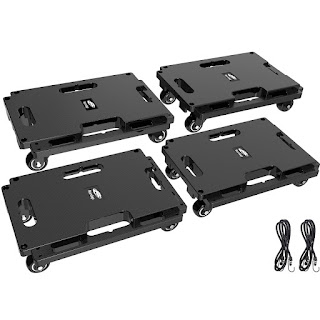Contemporary Woodworking Plans for Sleek and Modern Furniture Pieces
The allure of handcrafted, modern furniture is undeniable. Its clean lines, minimalist aesthetic, and inherent quality offer a timeless appeal that transcends fleeting trends. This article delves into the world of contemporary woodworking, providing detailed insights into designing and constructing sleek, modern furniture pieces. We will explore various design principles, material selections, and construction techniques to empower aspiring woodworkers to create exquisite pieces for their homes.
Understanding the Principles of Modern Design
Before embarking on any woodworking project, a thorough understanding of modern design principles is crucial. Modern design, often characterized by its functionalism and simplicity, prioritizes clean lines, geometric forms, and a reduction of ornamentation. Key elements to consider include:
Functionality over Ornamentation
Functionality is paramount in modern design. Every element of a piece should serve a purpose. Avoid unnecessary embellishments or decorative details that detract from the overall clean aesthetic. The focus should be on the piece's utility and its seamless integration into its environment.
Emphasis on Geometric Forms
Modern design favors geometric shapes such as cubes, rectangles, and circles. These forms lend themselves well to clean lines and a sense of order. Complex curves or intricate details are generally avoided in favor of straightforward, easily understood shapes.
Material Honesty
The inherent beauty of the materials themselves should be celebrated. Modern design often showcases the natural grain and texture of wood, rather than obscuring it with paint or excessive finishes. The choice of wood species plays a crucial role in achieving the desired aesthetic.
Color Palette and Finishes
A minimalist color palette is characteristic of modern design. Neutral tones such as white, black, gray, and natural wood finishes are frequently employed. These colors create a sense of calm and allow the furniture's form and materiality to take center stage. Finishes should be subtle and enhance the natural beauty of the wood, rather than masking it.
Choosing the Right Wood Species
The selection of wood significantly impacts the final appearance and durability of the furniture. Several species are particularly well-suited for contemporary woodworking projects:
Hardwoods for Durability and Elegance
Hardwoods such as walnut, cherry, maple, and oak offer exceptional durability, strength, and a beautiful grain pattern. Walnut, with its rich, dark tones, is a popular choice for modern furniture, lending a sophisticated and luxurious feel. Maple, known for its light color and fine grain, provides a clean, minimalist aesthetic. Oak, with its strength and versatility, can be used in various applications.
Softwoods for Affordability and Versatility
While hardwoods are preferred for their strength and longevity, softwoods like pine and fir can be suitable for certain projects, especially when cost is a major factor. Pine, with its readily available and relatively affordable nature, can be an excellent choice for projects that prioritize functionality over high-end aesthetics. Proper finishing is crucial to enhance its durability.
Exotic Wood Options
For truly unique pieces, exotic wood species such as zebrawood, wenge, and bubinga can be considered. These woods possess striking grain patterns and colors that add a touch of dramatic flair to contemporary designs. However, their cost and availability should be carefully weighed against the project's budget and requirements.
Essential Tools and Techniques for Contemporary Woodworking
Constructing sleek, modern furniture demands precision and expertise. The following tools and techniques are essential:
Precision Cutting and Joinery
Accurate cuts are critical for achieving clean lines and precise joinery. Table saws, mitre saws, and hand planes are indispensable for achieving the necessary level of precision. Strong and accurate joinery, such as mortise and tenon, dovetail, or dowel joints, is essential for the structural integrity and longevity of the furniture.
Sanding and Finishing
A smooth, even finish is crucial for highlighting the beauty of the wood. Orbital sanders, random orbital sanders, and hand sanding blocks are used to achieve various levels of smoothness. The choice of finish depends on the desired aesthetic and the wood species. Oil-based finishes, such as tung oil or linseed oil, enhance the natural beauty of the wood, while lacquer and polyurethane offer more durability and protection.
Hardware Selection
Hardware should be chosen carefully to complement the minimalist aesthetic. Invisible hinges, flush pulls, and minimalist drawer slides are often preferred to maintain a clean, uncluttered look. The hardware should be functional and durable, while seamlessly integrating with the overall design.
Contemporary Woodworking Projects: Examples and Plans
Several projects showcase the principles of contemporary woodworking:
Floating Shelves
Simple yet elegant, floating shelves are a great introductory project. They require minimal tools and materials, allowing beginners to practice precision cutting and joinery. The clean lines and minimalist design make them ideal for modern interiors.
Modern Coffee Table
A modern coffee table presents a more challenging project, requiring more advanced joinery techniques and potentially the use of more complex shapes. A simple, rectangular design with clean lines and a subtle finish can showcase the beauty of the chosen wood.
Minimalist Sideboard
A minimalist sideboard is an ambitious project, demanding expertise in woodworking and joinery. The design should incorporate clean lines, minimal ornamentation, and functional storage solutions. The choice of wood and finish should be carefully considered to enhance the sideboard's overall aesthetic.
Conclusion
Contemporary woodworking offers a rewarding path to crafting beautiful and functional furniture. By understanding modern design principles, selecting appropriate materials, and mastering essential techniques, aspiring woodworkers can create exquisite pieces that will enhance their homes for years to come. The projects outlined above serve as a starting point, encouraging exploration and creativity in the pursuit of minimalist elegance in furniture design.


















